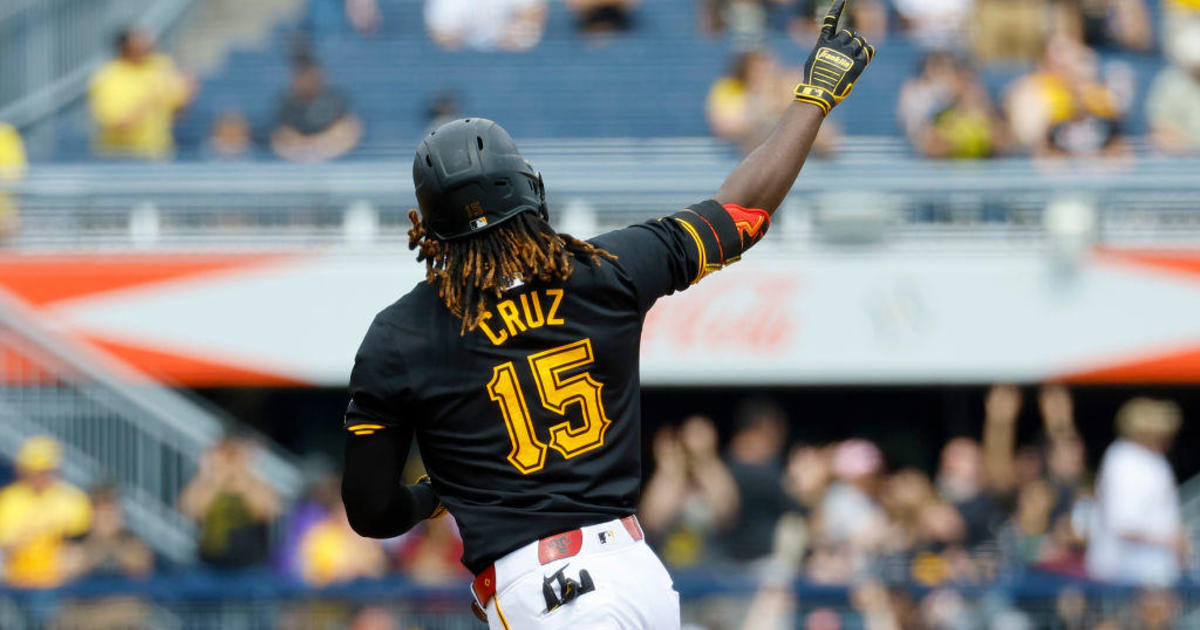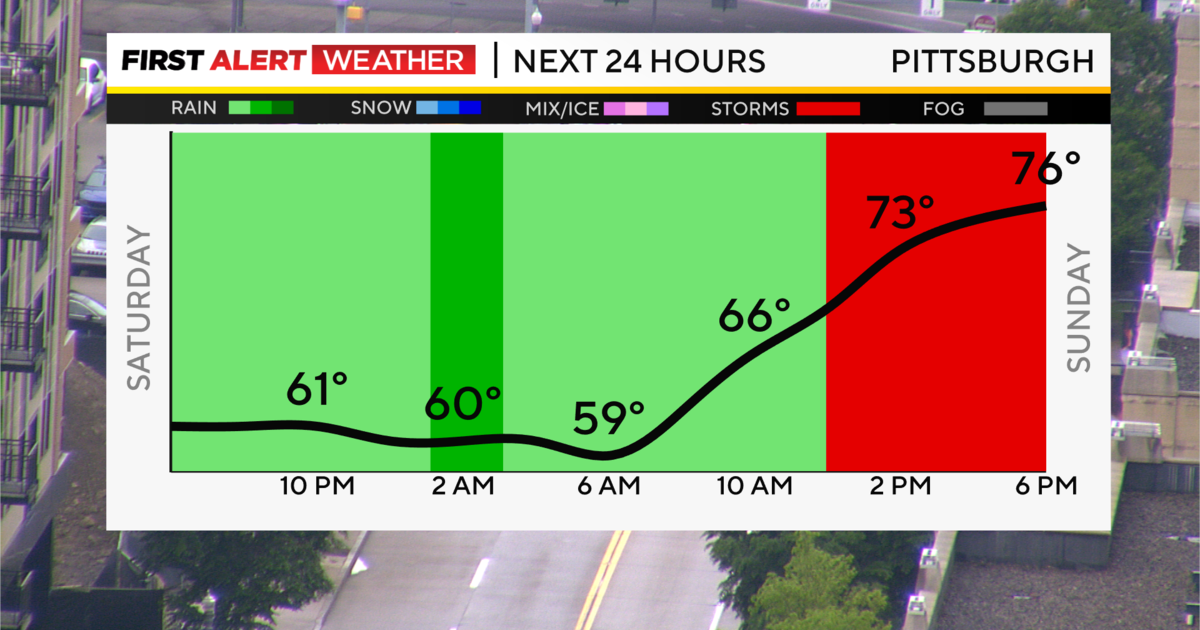Penguins Perspectives: Spreadsheet hockey
PITTSBURGH (KDKA) – As I was searching for inspiration on what to write this week for Penguins Perspectives, I sat down to play some EA Sports NHL 23, and this past week's Hockey Ultimate Team challenge was called "Spreadsheet Hockey."
(I promise, this is not an ad, I've spent far too much money on the EA NHL franchise over the past 15 years and all I have to show for it is frustration and a few broken Xbox controllers)
Essentially, the game highlighted NHL players who, while they are superstars, also have very good underlying metrics, or to use the bad word that constantly divides sports fans and pundits alike – analytics!
GASP!
Before we dive into a few things, I want to be clear – I am not, in any way shape, or form, an analytics expert and I do not claim to be. Some of the finest people on these here internets that cover hockey and are absolute wizards can be found below.
Here at home, my friend and cohost Jesse Marshall finds ways to weave both film and analytics together to tell you a full story – you can find his work on The Athletic as well as McKeen's Hockey.
Staying at The Athletic, there is Dom Luszczyszyn, their resident number-cruncher who can take you deep into the world of analytics and make it funny and understandable.
Lastly, a great resource for analytics that is easily digestible and in picture form is J.Fresh on Twitter. He does a wonderful job putting things into charts and visual aids that really make analytics understandable.
Those are just three examples and if you're like me and spend a lot of time on Hockey Twitter, you've seen countless examples of people who do great work with the analytic community.
Now, one last thing I want to make sure readers are clear on, anyone who does work with analytics will tell you, they are NOT the end-all, be-all. They are not a silver bullet to success nor are they just nerds who couldn't play the sport trying to take it over. They are just a resource in a team's arsenal of success. Much like film study, nutrition, working out, and practice all contribute to a team's overall success, knowing and understanding analytics can help a front office and a coaching staff identify inefficiencies in roster construction and game management.
Anyone that tells you they are the gospel is simply someone trying to sell you a bill of goods.
Let's begin.
First off, we'll define a couple of terms you may see thrown around in articles, and even in some regional broadcasts.
Corsi: Simply put – it's plus/minus but for shot attempts.
A shot attempt is just that, anything that is considered shooting the puck. However, unlike shots on goal, this counts it all: blocked shots (whether by a skater or goalie), missed shots (missing the net), and shots on goal.
This metric can be used to determine who controls the play more and who has possession of the puck more. If you have a positive Corsi rating, chances are you had the puck more than your opponent, which is usually a good thing.
Fenwick: This is Corsi but without blocked shots. So, essentially, shots on goal and shots that miss the net.
Keep in mind, you won't see these two metrics much anymore. They were the trailblazers of hockey analytics and as the field has evolved, these two have been phased out, but chances are if you've been around hockey for a while, you've heard these two terms.
One of the biggest terms hockey fans have likely heard quite a bit lately, and has its beginnings in Corsi and Fenwick, is "expected goals."
This, similar to how Corsi can be used to figure out possession and control of play, can determine if a team is getting quality scoring chances. This stat assigns a value to shot attempts based on shot type (wrist shot, snap shot, slap shot, deflection, redirection), location on the ice, distance from the net, and angle toward the net.
Expected goals can be presented in different ways, they can be applied to an individual player to determine if they're getting quality scoring chances when they're on the ice and how many goals they could score, or as a team metric to determine if they are getting the better of the scoring chances throughout a 60-minute game.
Lastly, and this is not where analytics end, a big term you will frequently hear in analytics is "per 60."
NHL games are 60 minutes, but there is no player (aside from a goalie) that spends the entire game on the ice. Statistics, such as points, goals for/goals against, and others can be weighed as "per 60."
For example, Sidney Crosby's points per 60 in 2021-22, was 2.8. This means for every 60 minutes Sidney Crosby played, he was good for just about three points. Does that mean three points every game? No, but if Sidney Crosby plays about 20 minutes per game, he's scoring about a point per game.
Among NHL players, according to Quant Hockey, Crosby ranked 35th in 2021-22. Johnny Gaudreau led the league with 4.2 points per 60.
So far this season, Crosby is on a similar pace, scoring 4.1 points per 60, and that is good for the top of the league.
As we've talked about in this space, Sidney Crosby at age 35 is showing no signs of slowing down and away from simply leading the league in even strength points, the "under the hood" numbers show he's still among the league's elite.
We've looked at individual performances, so let's look at team performance. Above we talked about expected goals and how it can be applied to both individuals and teams.
A great look at what expected goals mean for a team can be found on Money Puck.
The Penguins currently rank in the top ten in the NHL with an expected goal percentage of about 54, as of December 8.
Here's how we're going to wrap up this crash course in "Spreadsheet Hockey:" none of this is set in stone. It's constantly evolving, just like the game itself.
I referenced a friend of mine, Jesse Marshall, above. There's something he always says when discussing analytics in hockey – there's a randomness that cannot be quantified in hockey. It's not like baseball where A leads to B and you should do C. The speed, unpredictability, and skill of the game make it impossible to script.
For those of you who have made it this far – thank you! As I said above, I'm in no way an expert and I lean on those who are when it comes to these analytics. As someone who once played, coached, and now analyzes the sport, I'm always looking for new ways to comprehend the sport.
I hope this was somewhat informative and exposed you to a different way to look at the sport. Again, analytics is not the end-all, be-all. They're simply a resource and a different way of understanding how elite players are elite, what players are truly underrated, and how some cap-strapped teams build depth without the money you'd think they'd need.
You can find plenty more resources about hockey analytics below from people much, much smarter than I am.



